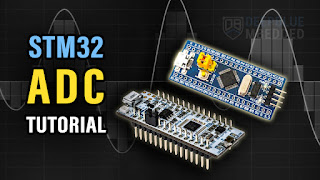How to debug 8051 microcontroller?
Debugging an 8051 microcontroller can range from simple, low-cost techniques to advanced hardware debugging. Here's a comprehensive guide covering all levels.
1. Basic Debugging Methods (No Special Hardware)
These are the first lines of defense and work with any setup.
A. LED Debugging
The simplest method - use GPIO pins to indicate program flow.
#include <reg51.h> sbit LED1 = P1^0; sbit LED2 = P1^1; void main() { LED1 = 0; // Turn on LED 1 - Program started // Some code... LED2 = 0; // Turn on LED 2 - Reached certain point // More code... while(1) { LED1 = !LED1; // Blink LED 1 - Main loop running delay_ms(500); } }
B. Serial UART Debugging
Send debug messages to a PC terminal (HyperTerminal, Tera Term, PuTTY).
#include <reg51.h> void UART_Init() { TMOD = 0x20; // Timer 1, Mode 2 TH1 = 0xFD; // 9600 baud @ 11.0592MHz SCON = 0x50; // 8-bit, 1 stop bit, REN enabled TR1 = 1; // Start Timer 1 } void UART_Write(char c) { SBUF = c; while(TI == 0); // Wait for transmission complete TI = 0; // Clear transmit flag } void UART_WriteString(char *str) { while(*str) { UART_Write(*str++); } } void main() { int counter = 0; UART_Init(); UART_WriteString("Program Started\r\n"); while(1) { UART_WriteString("Counter: "); UART_Write(counter + '0'); UART_WriteString("\r\n"); counter++; delay_ms(1000); } }
2. Software Simulators
Test your code without physical hardware.
Popular Simulators:
Keil µVision Simulator (Most popular)
Simplicity Studio (Silicon Labs)
SDCC Simulators
Proteus VSM (Mixed mode simulator)
Advantages:
No hardware required
Set breakpoints, watch variables
Monitor register values
Performance analysis
Peripheral simulation (UART, I2C, Timers)
Keil µVision Debugging Example:
Build your project
Click "Start Debug Session" (Ctrl+F5)
Use these windows:
Register Window - View CPU registers
Watch Window - Monitor variables
Memory Window - Examine memory contents
Serial Window - Virtual UART terminal
Set breakpoints (F9)
Step through code (F10, F11)
3. Hardware Debugging Methods
A. In-Circuit Debugging with Monitor Program
Some 8051 variants have a small monitor program in ROM that allows basic debugging.
B. Embedded Debuggers (Most Common)
1. Silicon Labs U-EC6 / C8051Fxx Debugger
// With proper debug hardware, you can: // - Set hardware breakpoints // - Single-step through code // - View/change register values in real-time // - Monitor variables while program runs
2. NXP/LPC series with JTAG/SWD
Modern 8051 variants often include JTAG or SWD interfaces.
C. Using SDCC with Simulators
# Compile with debug info sdcc -c --debug file.c # Simulate with access to debug symbols sdcsim
4. Advanced Debugging Techniques
A. Conditional Debugging
#ifdef DEBUG #define DBG_PRINT(msg) UART_WriteString(msg) #else #define DBG_PRINT(msg) #endif void critical_function() { DBG_PRINT("Entering critical_function\r\n"); // Your code here DBG_PRINT("Exiting critical_function\r\n"); }
B. Variable Monitoring
void debug_print_variables() { UART_WriteString("Variables - "); UART_WriteString("Temp: "); print_hex(temperature); UART_WriteString(" ADC: "); print_hex(adc_value); UART_WriteString("\r\n"); }
C. Stack Overflow Detection
unsigned char stack_canary = 0xAA; void check_stack_integrity() { if(stack_canary != 0xAA) { UART_WriteString("STACK OVERFLOW DETECTED!\r\n"); while(1); // Halt system } }
5. Practical Debugging Workflow
Step 1: Reproduce the Issue
Make the problem occur consistently
Note exact conditions
Step 2: Isolate the Problem Area
Use LED indicators to find which function fails
Add serial debug messages at key points
Step 3: Analyze Registers and Memory
void dump_registers() { UART_WriteString("PSW: "); print_hex(PSW); UART_WriteString(" SP: "); print_hex(SP); UART_WriteString(" DPTR: "); print_hex(DPH); print_hex(DPL); UART_WriteString("\r\n"); }
Step 4: Check Common 8051 Issues
Register bank selection (PSW bits)
Bit-addressable vs byte-addressable memory
Interrupt latency and stacking
Timer reload values
Stack overflow (8051 has limited stack space)
6. Debugging Tools Checklist
| Tool | Purpose | Cost |
|---|---|---|
| LEDs & Resistors | Basic program flow | $ |
| USB-TTL Serial | Serial debugging | $$ |
| Keil µVision | Simulation & Debugging | $$$ |
| Hardware Debugger | Real-time debugging | $$$$ |
| Logic Analyzer | Signal timing analysis | $$$ |
| Oscilloscope | Signal quality check | $$$$ |
7. Common 8051-Specific Debugging Tips
Watch the Stack Pointer - 8051 has very limited RAM (128/256 bytes)
Check Register Banks - Ensure you're using the correct bank
Interrupt Debugging - Use flags to detect interrupt entry/exit
Power Management - Some issues only appear in low-power modes
Crystal Startup - Verify oscillator is running correctly
Example: Interrupt Debugging
bit interrupt_occurred = 0; void timer0_isr() interrupt 1 { interrupt_occurred = 1; TF0 = 0; // Clear timer flag // Your ISR code } void main() { if(interrupt_occurred) { UART_WriteString("Timer0 interrupt occurred\r\n"); interrupt_occurred = 0; } }
Start with simple LED/serial debugging, then move to simulators, and finally invest in hardware debuggers for complex projects. The method you choose depends on your budget, project complexity, and debugging needs.
.jpg)



评论
发表评论